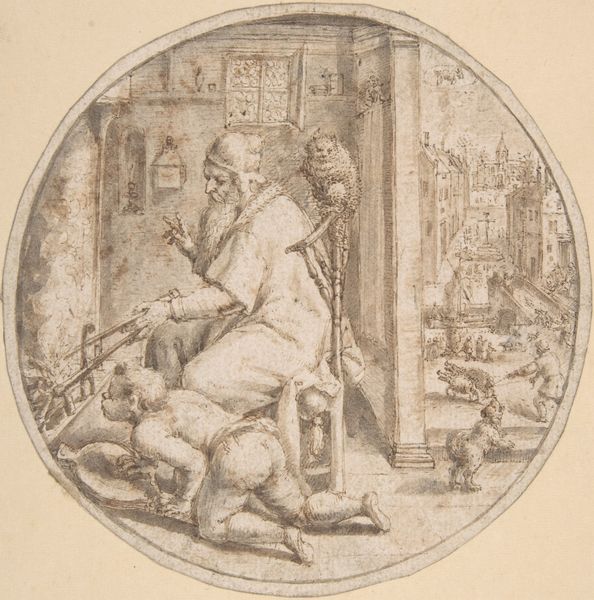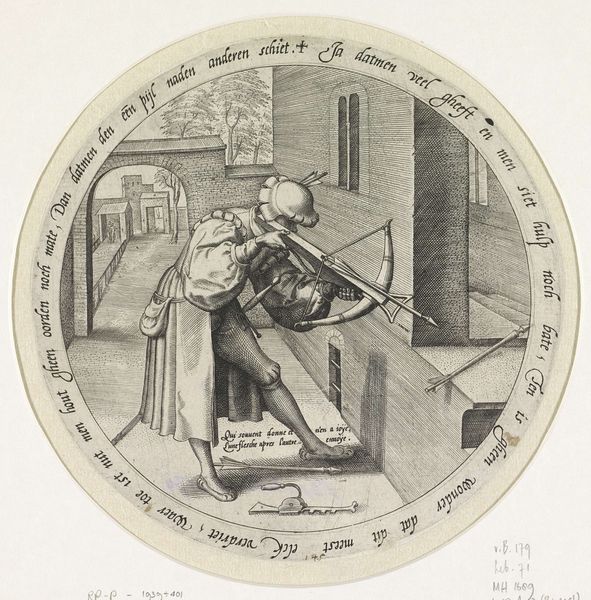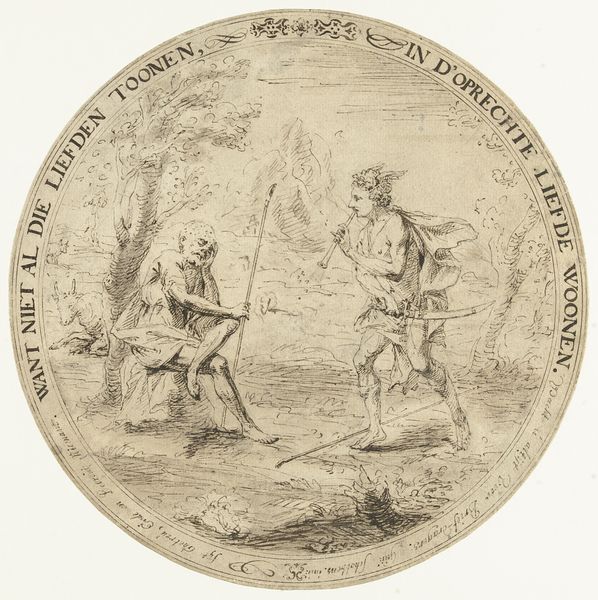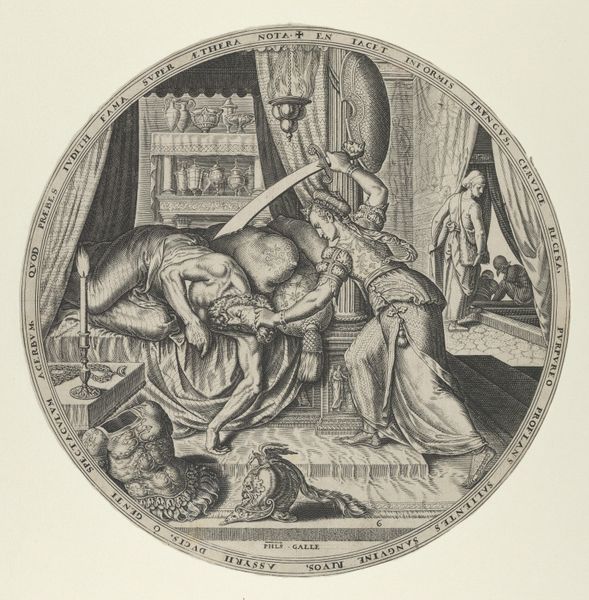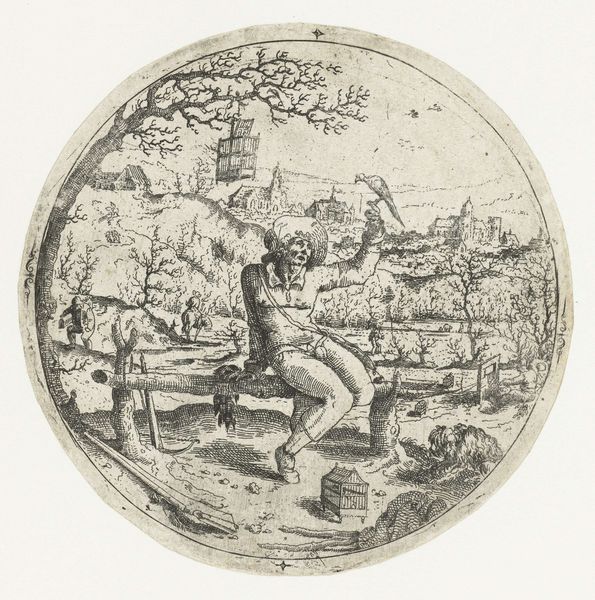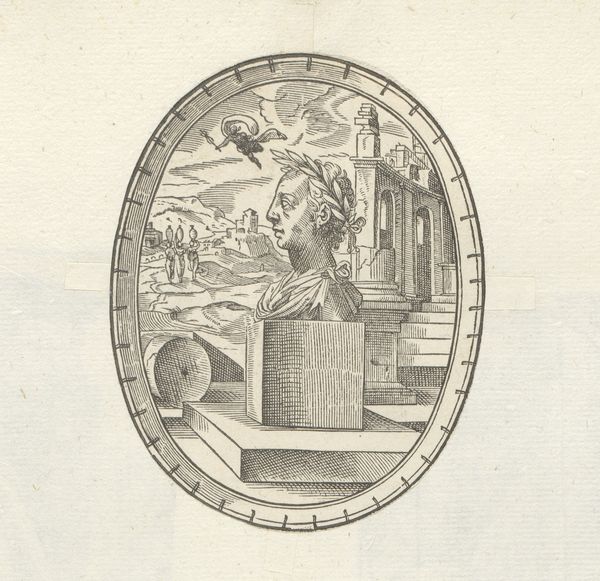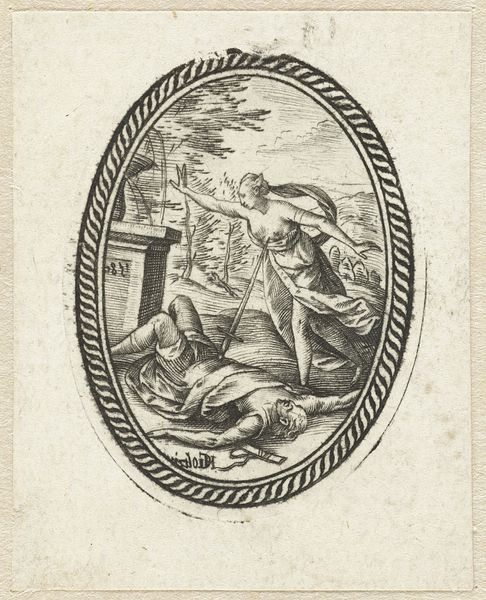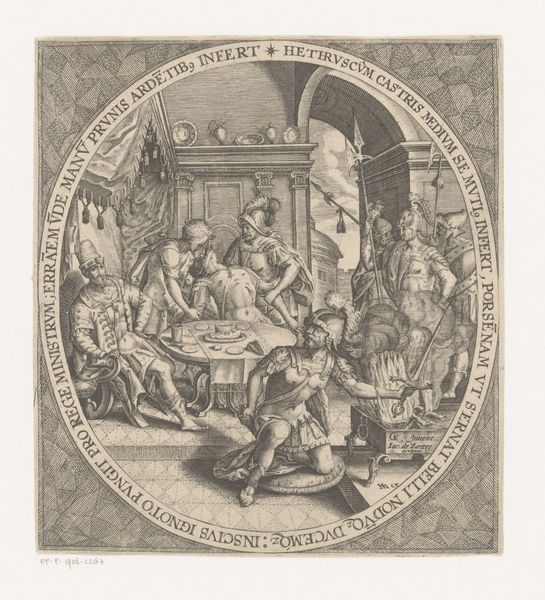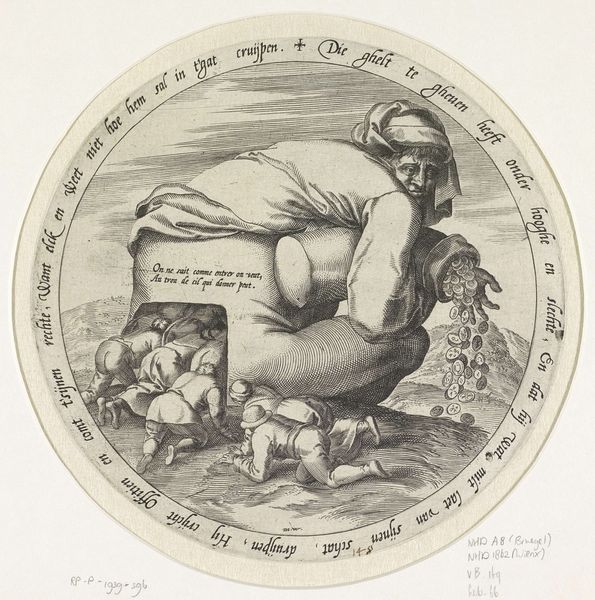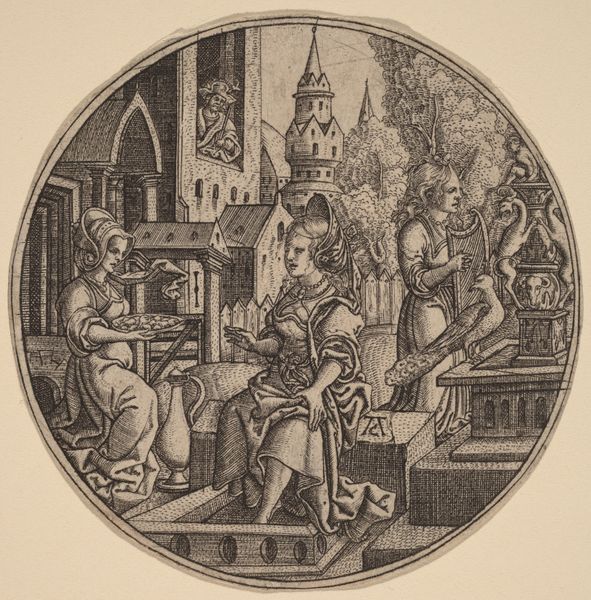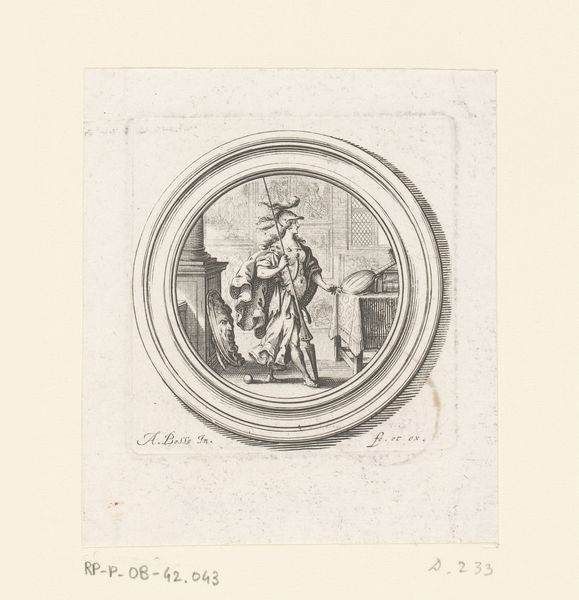
print, engraving
#
narrative-art
# print
#
old engraving style
#
mannerism
#
figuration
#
history-painting
#
engraving
Copyright: Rijks Museum: Open Domain
Curator: Let’s take a look at an engraving dating from 1566 to 1570 titled, "De rijke man speelt viool op een kaakbeen" now at the Rijksmuseum. It's attributed to Wierix. What's your immediate reaction? Editor: Stark and unsettling. The composition, trapped in this circular frame, feels incredibly tight. There’s this grim quality to the whole thing, even with the rather foppish figure at the center. Curator: Absolutely. He sits astride a massive jawbone, looking rather self-satisfied as he plays his instrument. That jawbone… it’s such a powerful symbol of mortality. Even his finery doesn't seem to diminish its weight. I can't help thinking that it functions as an allegorical image of mortality, pleasure, and transience. Editor: Right. It draws the eye immediately, doesn’t it? That the artist chose this—likely copperplate—to etch and then print many times… well, there’s a real physical commitment to circulating this message. There is clear attention paid to material detail: the man's plush garments and the detailed towers in the background. These require a specific sort of making that is reliant on the access to certain materials and also specific type of patronage to justify that. Curator: It underscores a keen interest in contrasting fleeting earthly pleasures with inevitable decay. The man is richly dressed, with musical accomplishment, seated jauntily; his posture mocks what we understand from that imposing jawbone beneath. Editor: Agreed. And thinking about it as a print—an easily reproduced and widely distributed image—emphasizes how Wierix critiques class disparity, I believe. To show wealth balanced upon bones really highlights the precarity of class differences. Curator: Consider also that small figure perched atop a tower on the right. I feel as if he suggests something about the fragility of earthly power – all observed and surveilled, as temporal and contingent as that jawbone might suggest. Editor: So much here hints at moralizing impulses mediated through detailed and exquisite craftsmanship. That Wierix uses the form of printmaking only enhances the potency of his message across place and time. It is, to be fair, a fascinating use of the form. Curator: I agree wholeheartedly. There's a layered, lingering presence to the artwork. Editor: Indeed. Thanks for shedding more light on the symbolism.
Comments
No comments
Be the first to comment and join the conversation on the ultimate creative platform.
